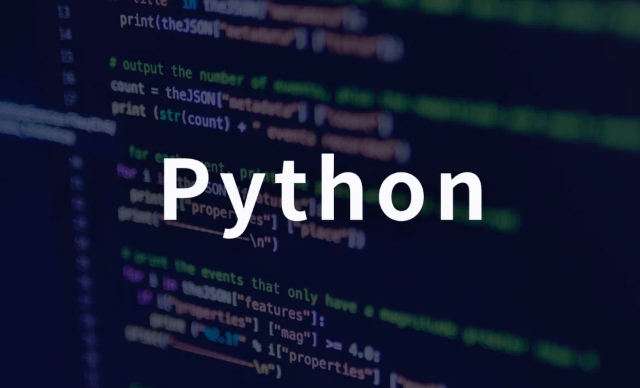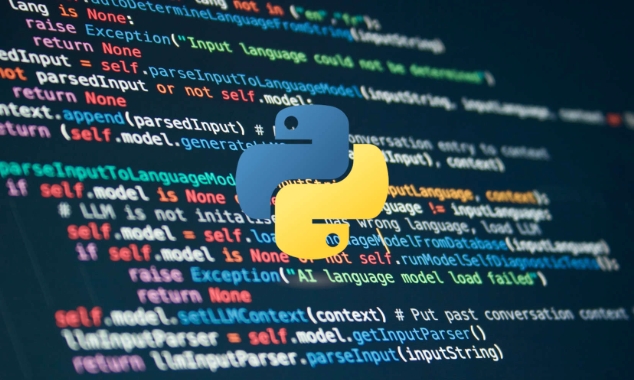Python can use the Pillow library to implement image watermarking, suitable for batch processing and automation. 1. When adding text watermarks using PIL, you need to install Pillow, open the picture, create the drawing object, call the draw.text() method and set the font path and translucent color; 2. The image watermark needs to load two pictures, adjust the size and transparency, and then synthesize them through Image.paste(), pay attention to converting them to RGBA mode; 3. In batch processing, you can traverse the folder through scripts, add watermarks to each picture and save them, and use parameter judgment to avoid repeated operations. It can also be integrated into Flask or FastAPI to provide interface services. Master these steps and details such as transparency, font paths, format conversion, etc., and you can efficiently complete the watermark task.

Python is indeed a good tool when adding watermarks to images. It has ready-made libraries, and the operation is not complicated, and is suitable for batch processing or automation. The key is to use the library and master the basic methods, and the rest is to adjust the details.

Use PIL to implement text watermarking
PIL (now called Pillow) is one of the most commonly used image processing libraries, and adding text watermarks is very direct. You can open the picture and then overlay a piece of transparent text on it, which will work well.
The operation steps are roughly as follows:

- Install Pillow:
pip install pillow - Open the picture file
- Create drawing object
ImageDraw.Draw() - Add text using
draw.text()method - Set the font size and color, it is recommended to use translucent colors, such as
(255, 255, 255, 128)
A little trick is to set the font path, otherwise the default font may not support Chinese or the style is too ugly. You can use ImageFont.truetype() to specify the local font file.
How to add the watermark of the picture?
If you want to use another image as a watermark (such as a logo), the idea is to superimpose the watermark image on the main image, and the key is to control the size and transparency.

Specific practices:
- Load two images with
Image.open() - Adjust the size of the watermark image, usually to zoom smaller.
- Use
Image.putalpha()or synthesis mode to control transparency - Use
Image.paste()to paste the watermark, specify the position coordinates and mask parameters
Note that both the main image and the watermark image must be in RGBA mode to correctly display the transparent effect. If the original image is in JPG format, remember to convert it to PNG first or use .convert("RGBA") to process it.
How to do batch processing?
It is too inefficient to manually add watermarks one by one. Python's advantage is that it can write a script to process the entire folder at one time.
A practical small script structure is roughly like this:
- Import os and Image modules
- Traverse all picture files in the specified directory
- Perform watermarking operations on each image
- Save as a new file to avoid overwriting the original image
You can also add a parameter to determine whether the watermarked image is skipped, so that there will be no errors when repeated operation. If it is for website content protection purposes, it can also be used to combine Flask or FastAPI to form an interface service, and upload images to automatically return to the version with a watermark.
Basically that's it. Watermarking looks simple, but it is easy to ignore details such as transparency, font paths, and format conversion when actually operating. As long as you figure out these things, it is quite easy to do this in Python.
The above is the detailed content of Python for Image Watermarking. For more information, please follow other related articles on the PHP Chinese website!

Hot AI Tools

Undress AI Tool
Undress images for free

Undresser.AI Undress
AI-powered app for creating realistic nude photos

AI Clothes Remover
Online AI tool for removing clothes from photos.

Clothoff.io
AI clothes remover

Video Face Swap
Swap faces in any video effortlessly with our completely free AI face swap tool!

Hot Article

Hot Tools

Notepad++7.3.1
Easy-to-use and free code editor

SublimeText3 Chinese version
Chinese version, very easy to use

Zend Studio 13.0.1
Powerful PHP integrated development environment

Dreamweaver CS6
Visual web development tools

SublimeText3 Mac version
God-level code editing software (SublimeText3)
 How to handle API authentication in Python
Jul 13, 2025 am 02:22 AM
How to handle API authentication in Python
Jul 13, 2025 am 02:22 AM
The key to dealing with API authentication is to understand and use the authentication method correctly. 1. APIKey is the simplest authentication method, usually placed in the request header or URL parameters; 2. BasicAuth uses username and password for Base64 encoding transmission, which is suitable for internal systems; 3. OAuth2 needs to obtain the token first through client_id and client_secret, and then bring the BearerToken in the request header; 4. In order to deal with the token expiration, the token management class can be encapsulated and automatically refreshed the token; in short, selecting the appropriate method according to the document and safely storing the key information is the key.
 Explain Python assertions.
Jul 07, 2025 am 12:14 AM
Explain Python assertions.
Jul 07, 2025 am 12:14 AM
Assert is an assertion tool used in Python for debugging, and throws an AssertionError when the condition is not met. Its syntax is assert condition plus optional error information, which is suitable for internal logic verification such as parameter checking, status confirmation, etc., but cannot be used for security or user input checking, and should be used in conjunction with clear prompt information. It is only available for auxiliary debugging in the development stage rather than substituting exception handling.
 What are python iterators?
Jul 08, 2025 am 02:56 AM
What are python iterators?
Jul 08, 2025 am 02:56 AM
InPython,iteratorsareobjectsthatallowloopingthroughcollectionsbyimplementing__iter__()and__next__().1)Iteratorsworkviatheiteratorprotocol,using__iter__()toreturntheiteratorand__next__()toretrievethenextitemuntilStopIterationisraised.2)Aniterable(like
 What are Python type hints?
Jul 07, 2025 am 02:55 AM
What are Python type hints?
Jul 07, 2025 am 02:55 AM
TypehintsinPythonsolvetheproblemofambiguityandpotentialbugsindynamicallytypedcodebyallowingdeveloperstospecifyexpectedtypes.Theyenhancereadability,enableearlybugdetection,andimprovetoolingsupport.Typehintsareaddedusingacolon(:)forvariablesandparamete
 How to iterate over two lists at once Python
Jul 09, 2025 am 01:13 AM
How to iterate over two lists at once Python
Jul 09, 2025 am 01:13 AM
A common method to traverse two lists simultaneously in Python is to use the zip() function, which will pair multiple lists in order and be the shortest; if the list length is inconsistent, you can use itertools.zip_longest() to be the longest and fill in the missing values; combined with enumerate(), you can get the index at the same time. 1.zip() is concise and practical, suitable for paired data iteration; 2.zip_longest() can fill in the default value when dealing with inconsistent lengths; 3.enumerate(zip()) can obtain indexes during traversal, meeting the needs of a variety of complex scenarios.
 Python FastAPI tutorial
Jul 12, 2025 am 02:42 AM
Python FastAPI tutorial
Jul 12, 2025 am 02:42 AM
To create modern and efficient APIs using Python, FastAPI is recommended; it is based on standard Python type prompts and can automatically generate documents, with excellent performance. After installing FastAPI and ASGI server uvicorn, you can write interface code. By defining routes, writing processing functions, and returning data, APIs can be quickly built. FastAPI supports a variety of HTTP methods and provides automatically generated SwaggerUI and ReDoc documentation systems. URL parameters can be captured through path definition, while query parameters can be implemented by setting default values ??for function parameters. The rational use of Pydantic models can help improve development efficiency and accuracy.
 How to test an API with Python
Jul 12, 2025 am 02:47 AM
How to test an API with Python
Jul 12, 2025 am 02:47 AM
To test the API, you need to use Python's Requests library. The steps are to install the library, send requests, verify responses, set timeouts and retry. First, install the library through pipinstallrequests; then use requests.get() or requests.post() and other methods to send GET or POST requests; then check response.status_code and response.json() to ensure that the return result is in compliance with expectations; finally, add timeout parameters to set the timeout time, and combine the retrying library to achieve automatic retry to enhance stability.
 Setting Up and Using Python Virtual Environments
Jul 06, 2025 am 02:56 AM
Setting Up and Using Python Virtual Environments
Jul 06, 2025 am 02:56 AM
A virtual environment can isolate the dependencies of different projects. Created using Python's own venv module, the command is python-mvenvenv; activation method: Windows uses env\Scripts\activate, macOS/Linux uses sourceenv/bin/activate; installation package uses pipinstall, use pipfreeze>requirements.txt to generate requirements files, and use pipinstall-rrequirements.txt to restore the environment; precautions include not submitting to Git, reactivate each time the new terminal is opened, and automatic identification and switching can be used by IDE.






